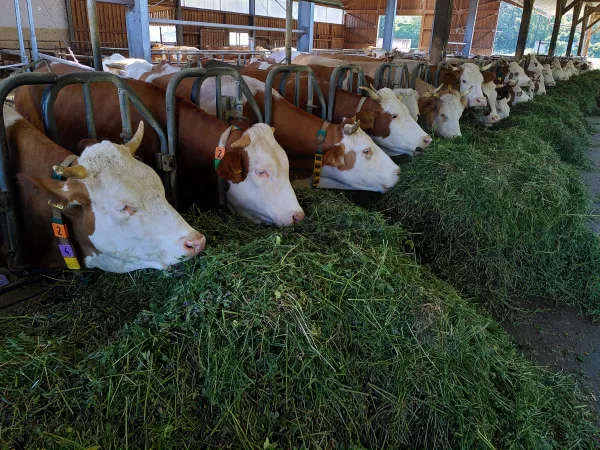Despite some alarming reports from the regions about problems with the harvesting of green fodder, which appeared a few months ago, now the situation has improved. With stocks, everything is fine, both in the country as a whole and in the regions.
It is interesting that in the summer the forage producers were even able to set records. For example, in August of this year, 233,000 tons of vegetable feed were produced in Russia. This is 20% more than a year earlier. “But August was not as remarkable as July 2022, when the production of vegetable feed shot up, and grew by almost 50% in a month, and on an annualized basis, the increase was 78%,” FEEDLOT, an analytical company, told the National Agrarian Agency. They noted that for eight months since the beginning of the year, the increase in the production of vegetable feed is already 20% compared to the same period last year.
Sergey Mikhnyuk, executive director of the National Feed Union, explains harvesting by dependence on the grain harvest: “If there is a positive trend in these crops in general, then it will also be in green fodder.” At the same time, according to the representative of the Union, it is necessary to take into account the fact that our country is stretched over several climatic zones and therefore, for example, in Khakassia, we observed some overlaps in the production of green fodder.
In early July, the ROSNG agency spoke with Khakass and Altai farmers who expressed fears that due to the drought they would not be able to procure the required volumes. One of the largest Khakass agricultural enterprises, Tselinnoye, estimated losses from crop failure at 5 million rubles, and in the Altai agro-industrial company Kolos, we were told that they would not get up to 40% of feed. Now a representative of this company commented on the situation: “It dried up a little and everything evened out. We compensate for the lack of some feeds with others.
The report of the analytical company says that from January to August, feed production decreased markedly in Siberia (by 6.7%) and in the Volga region (by 7.6%). At the same time, experts do not consider the situation difficult. In their opinion, some regions can still increase production, as in the Saratov region, where record grain crops are harvested. The Regional Ministry of Agriculture announced the day before that a two-year supply of fodder had already been formed in some farms. The procurement plan was also exceeded in the Nizhny Novgorod region. And from the Krasnoyarsk Territory, more than 300 thousand tons of fodder grain were taken to St. Petersburg, the Krasnodar and Primorsky Territories. In the feed Union they say that "there are always flows that can solve the problem."
© Inline LLC 2015-2025. Privacy Policy | Terms of Service